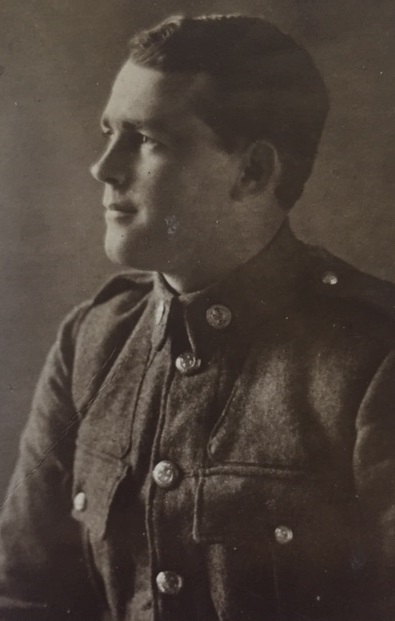Pte
Henry Morris
Informationen zu Geburt
|
Geburtsdatum: 08/06/1893 |
Allgemeine Informationen
|
Beruf: Landwirt / Bauman / Ökonom |
Informationen zum Armeedienst
|
Land: New Zealand |
|
Truppe: New Zealand Expeditionary Force |
|
Rang: Private |
|
Dienstnummer: 24/1757 |
|
Einberufung datum: 18/10/1915 |
|
Einberufung ort: Matakohe, Northland, New Zealand |
|
Einheiten: — Auckland Infantry Regiment, 2nd Bn. (Letzte bekannte Einheit) |
Informationen zu Tod
|
Sterbedatum: 04/10/1917 |
|
Sterbeort: Wallemolen, Passendale, Belgien |
|
Todesursache: Im Kampf gefallen |
|
Alter: 24 |
Begräbnisplatz
|
Tyne Cot Cemetery Grabstelle: L Reihe: F Grab: 9 |
Auszeichnungen und Orden 2
|
British War Medal Medaille |
|
Victory Medal Medaille |
Punkte von Interesse 2
| #1 | Einberufung ort | ||
| #2 | Ort des Todes (ungefähr) |
Meine Geschichte
Private Henry Morris – a farmer from Matakohe, Northland, New Zealand – joined the 3rd New Zealand Rifle Brigade. After training in New Zealand and Egypt he embarked for France in April 1916. In September 1916, Henry was transferred to the 2nd Battalion Auckland Infantry Regiment. A couple of days later he was wounded in action during the Battle of the Somme. Henry was hospitalised in England with a gunshot wound to the chest.
On the 4th of October 1917, Henry took part in the Battle of Broodseinde. The New Zealand Division advanced astride the ‘s Gravenstafel-Mosselmarkt road with two brigades. The 1st New Zealand Brigade on the left, attacked with the 1st Auckland and the 1st Wellington. When the first objective had been obtained and consolidated, the 2nd Auckland and the 2nd Wellington were to move through the leading battalions and were to head to the second objective at the foot of the Bellevue Spur.
As soon as the attack started, the 1st Auckland drifted to the north, dragging the left companies of the Wellingtons with them. The 1st Auckland took Winchester Farm, Winzig and Albatross farm. All these strongpoints were in the 48th Division’s area of operation. As the first wave had strafed to the north, certain German positions had been left unharmed. So when the 2nd Auckland and 2nd Wellington Battalions advanced, the 2nd Auckland met opposition from Korek on the ‘s Gravenstafel Ridge. After fierce fighting at Korek the 2nd Auckland and 2nd Wellington took up the advance. They worked together, taking a German battalion headquarters in a group of pillboxes known as Waterloo. The 2nd Auckland went on to Calgary Grange and established a line just east of this position.
Private Henry Morris, 24, was one of the 40 men of the 2nd Auckland Battalion that went missing on the 4th of October 1917. After the war, his remains were exhumed near the hamlet of Wallemolen, which was in the 48th Division’s area. Moreover Wallemolen was still in German hands at the end of the day.
On the 4th of October 1917, Henry took part in the Battle of Broodseinde. The New Zealand Division advanced astride the ‘s Gravenstafel-Mosselmarkt road with two brigades. The 1st New Zealand Brigade on the left, attacked with the 1st Auckland and the 1st Wellington. When the first objective had been obtained and consolidated, the 2nd Auckland and the 2nd Wellington were to move through the leading battalions and were to head to the second objective at the foot of the Bellevue Spur.
As soon as the attack started, the 1st Auckland drifted to the north, dragging the left companies of the Wellingtons with them. The 1st Auckland took Winchester Farm, Winzig and Albatross farm. All these strongpoints were in the 48th Division’s area of operation. As the first wave had strafed to the north, certain German positions had been left unharmed. So when the 2nd Auckland and 2nd Wellington Battalions advanced, the 2nd Auckland met opposition from Korek on the ‘s Gravenstafel Ridge. After fierce fighting at Korek the 2nd Auckland and 2nd Wellington took up the advance. They worked together, taking a German battalion headquarters in a group of pillboxes known as Waterloo. The 2nd Auckland went on to Calgary Grange and established a line just east of this position.
Private Henry Morris, 24, was one of the 40 men of the 2nd Auckland Battalion that went missing on the 4th of October 1917. After the war, his remains were exhumed near the hamlet of Wallemolen, which was in the 48th Division’s area. Moreover Wallemolen was still in German hands at the end of the day.
Quellen 7
|
Cenotaph https://www.aucklandmuseum.com/war-memorial/online-cenotaph/record/C11040?n=24%2F1757&ordinal=0&from=%2Fwar-memorial%2Fonline-cenotaph%2Fsearch Verwendete Quellen |
|
CWGC https://www.cwgc.org/find-war-dead/casualty/464008/morris,-henry/ Verwendete Quellen |
|
First, second and third battalions the Auckland Regiment New Zealand Expeditionary Force at the Battle of Broodseinde (Third Ypres) : 4 october 1917, John H. Gray, 2009, p. 1-3, 16-19. Verwendete Quellen |
|
Passchendaele: The Day-by-Day Account, McCarthy C., London, Arms & Armour Press, 1995, p. 112-114. Verwendete Quellen |
|
The Auckland regiment N.Z.E.F. 1914-1919. Being an account of the doings on active service of the first, second and third battalions of the Auckland Regiment, Burton O.E., Auckland, Whitcombe & Tombs, 1922, p. 165-181. Verwendete Quellen |
|
The long long trail https://www.longlongtrail.co.uk/army/ Verwendete Quellen |
|
The New Zealand Division 1916 - 1919, Stewart H., Whitecombe & Tombs, p. 248 - 275. Verwendete Quellen |
